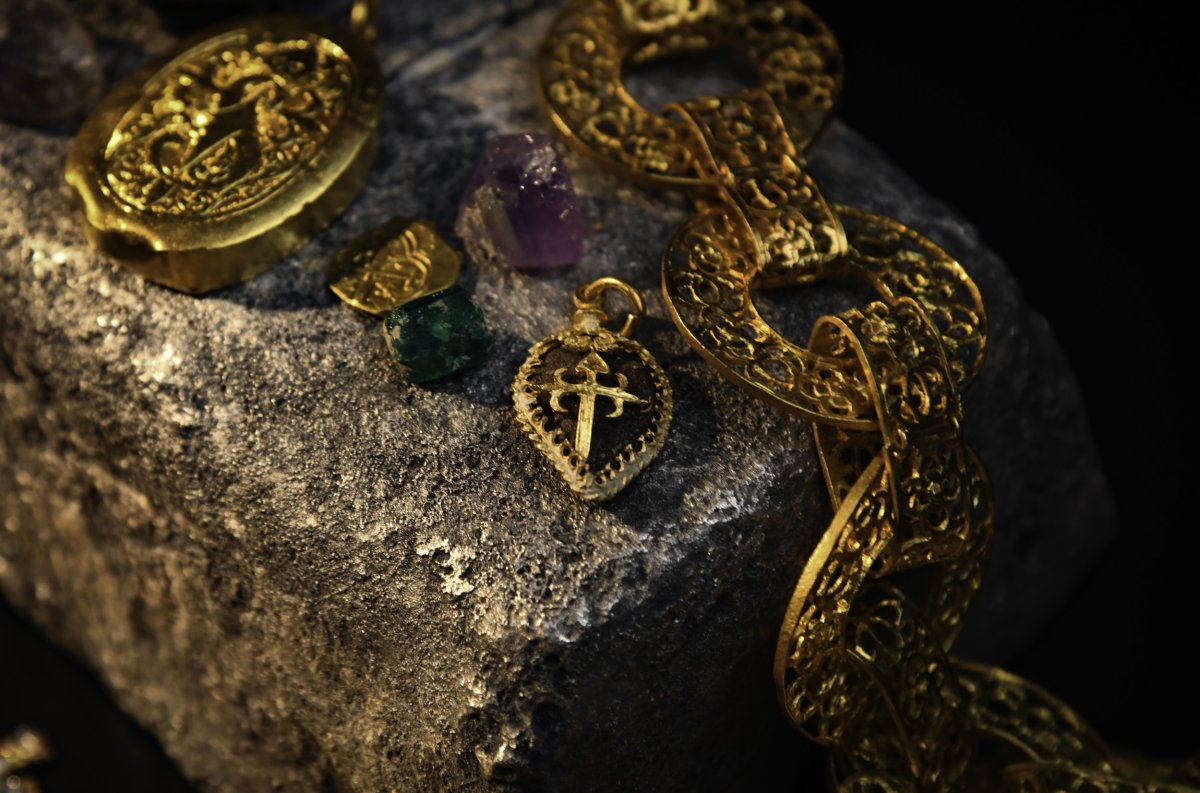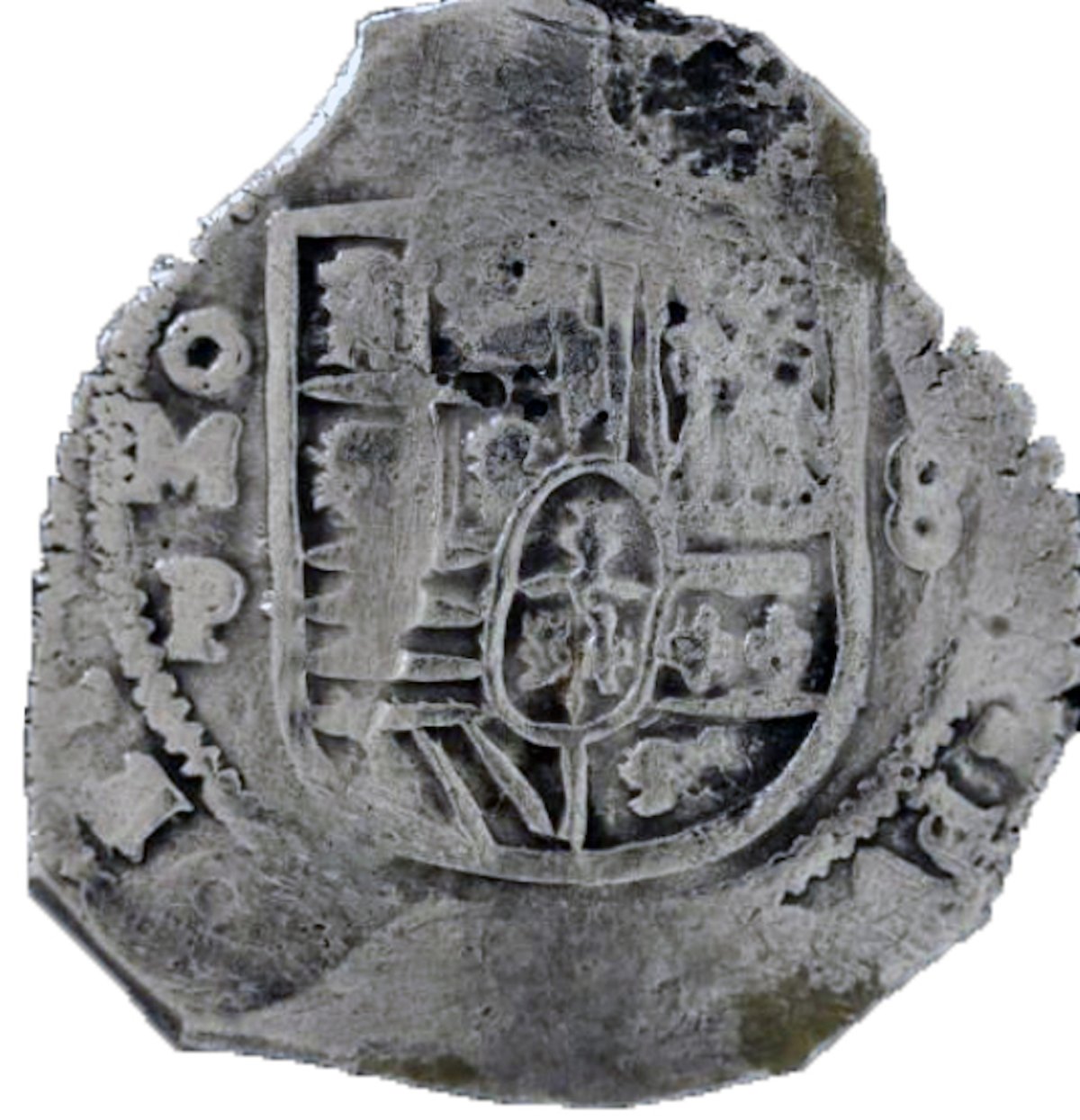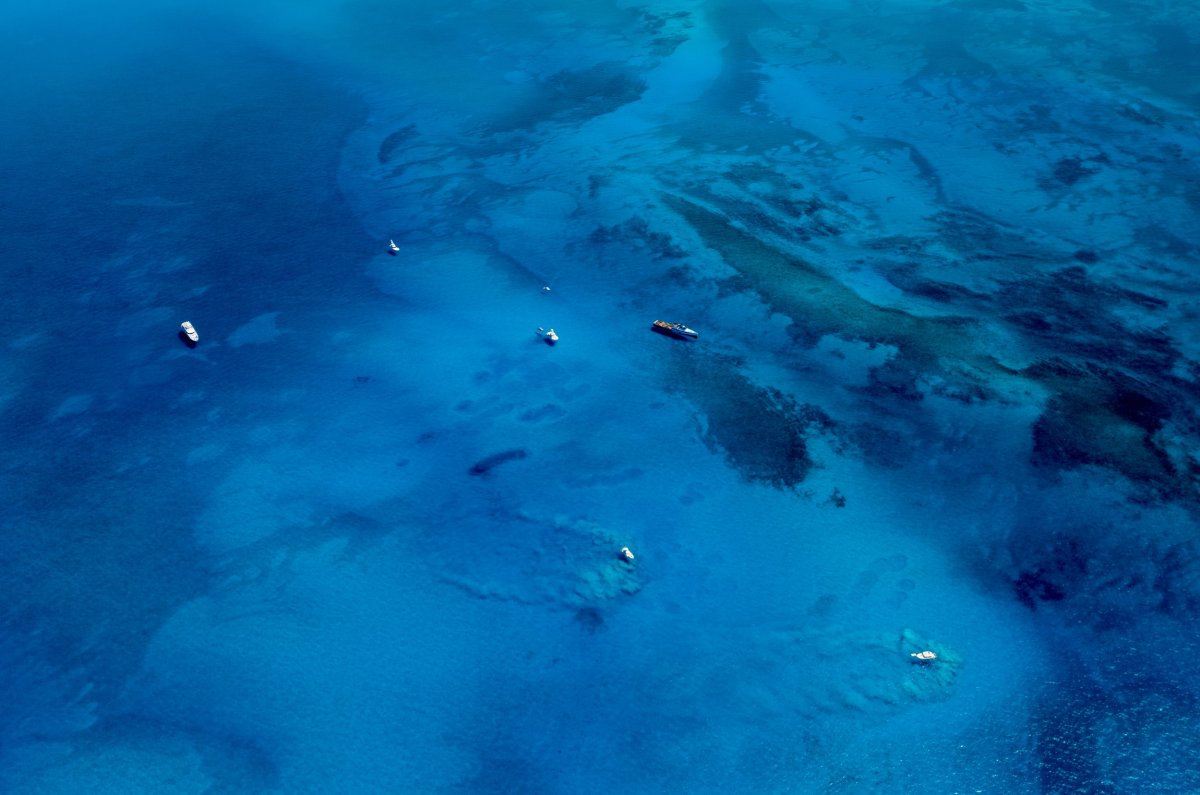Explorers have uncovered a three-mile-long trail of debris from a sunken treasure ship full of "wonderful" and "culturally priceless" finds in the waters of the Bahamas.
Experts thought the 17th-century Spanish galleon—known as the Nuestra Señora de las Maravillas (meaning "Our Lady of Wonders")—had been "salvaged into oblivion," Sean Kingsley, editor-in-chief of Wreckwatch magazine, told Newsweek.
But four years of underwater archaeology conducted by Allen Exploration (AllenX) has painstakingly mapped the heavily scattered wreckage of the 891-ton galleon. The team identified different parts of the ship, as well as thousands of artifacts, including silver ingots, emeralds and amethysts.
The research, published in an Ocean Dispatches report, has also shed light on where the finds originally came from on the ship and how the galleon broke apart.

The Maravillas sank late at night on January 4, 1656, in the northern Bahamas as it was heading home to Cádiz, southwestern Spain, with around 650 people on board—most of whom perished. The galleon was rammed by its flagship and collided with a reef, suffering significant damage. At the time, it was laden with treasure—including a large quantity of contraband and objects salvaged from another galleon lost off the coast of Ecuador two years earlier.
"It was one of the richest treasure ships ever lost at sea when it sank," said Kingsley, who is an author on the report. "In 1656, the golden age of Spain was fading fast. The courtiers and officers thronging King Philip IV's Court in Madrid were condemned as idle, wasteful and corrupt. His palace was said to be the wickedest in history. Trade with the Indies was at a standstill and unregistered treasure crippling the Crown.
"The bottomless Americas' contraband smuggled on the Maravillas—stowed under floor boards or stuffed under beds—shows how 17th-century writers were right to worry," added Kingsley. "Everyone was on the make. As a chronicler put it, 'The King's treasury is like an owl from which every little bird plucks a feather.' The unregistered Mexican coins, unstamped silver ingots and masses of Colombian emeralds and amethysts found by AllenX are a microcosm of the age's get-quick-rich schemes."

In the years after the galleon sank, it was heavily stripped by Spanish salvors and then various expeditions led by crews from European nations and the Americas. The wreck was fished for treasure on at least 21 occasions between 1656 and 1683, in which time around 5 million pesos' worth of silver bars, coins and worked silver were recovered.
Then, between 1972 and 1991, modern salvage teams rediscovered the wreck and recovered an alleged 30 tons of gold bars, coins, silver nuggets, jewelry, emeralds, iron anchors, and cannons, among other items.
"Many experts believe the story of the Maravillas is over, that past salvage picked the old ship dry. Nothing survived," Carl Allen, an American entrepreneur, philanthropist and explorer, who is the founder of Allen Exploration, said in a press release. "AllenX begged to differ, and now we've proven the wreck is not all vanished."

Surveys conducted by AllenX off the western Little Bahama Bank—an area of shallow sea—since 2019 have identified around 8,800 targets of potential cultural importance, using a device known as a magnetometer.
"The 8,800 magnetometer targets are curious anomalies earmarked for checking," many of which turn out to be cultural remains, Kingsley said.
"A magnetometer 'fish' is towed behind a research ship and reads both the seabed's magnetism level and anything above it that has a different magnetic profile. The art is to figure out if those 'spikes' might be wreckage and worthwhile diving on. Dan Porter and his offshore team have decades of experience across Florida, the Caribbean and Latin America looking at these spikes as if it gives them X-ray eyes. To most people, they'd look like meaningless smudges," Kingsley said.

After identifying targets of potential interest, divers explored them, documenting a sprawling field of artifacts running southeast for a distance of more than 3 miles from where the galleon originally sank.
Hidden beneath waves and sand, the team found several parts of the ship, including ballast stones, iron rigging and two iron swivel guns. They also documented cannonballs, rifles, more than 800 lead musket balls, almost 11,000 olive jar fragments, nearly 3,000 silver coins, as well as emeralds and amethysts, among other items. All of the finds have been painstakingly mapped.
"At first glance, you might think that it was centuries of hurricanes and storms that broke up the Maravillas. But the archaeology has forced us to re-think that theory," Dan Porter, the project's offshore manager who oversaw the mapping, said in the press release.
"If the galleon was broken up by hurricane after hurricane, the remains would be scattered around all four points of the compass. That's not the reality. They're mostly focused in one artifact scatter trail running southeast," Porter said.

The debris field also contained some "unique" items. These include a gold chain crafted in Manila in the Philippines, as well as gold and gem pendants made for the Knights of the Order of Santiago—a Christian military-religious order founded in the 12th century in Spain. Such items were likely owned by high-ranking officials on the ship.
"You can be sure that if these valuable items were still sitting on the main wreck when the Maravillas was salvaged in 1656, they'd have been brought up, too," Jim Sinclair, the project's chief archaeologist, said in the press release. "This can only mean that the treasures found by AllenX were scattered during the five months before the Spanish salvage operations began in June 1656."
AllenX believes that storms may have been responsible for creating the debris trail between January and June 1656. The team also developed a model to tie the sunken artifacts to their original places on the Maravillas 367 years ago.
"The proxy evidence shows how the Maravillas broke up from powerful storms very quickly after the ship sunk," Kingsley told Newsweek. "The old galleon has seen little respect at the hands of salvors from 1656 into the 1990s. AllenX has reversed that trend to make sure the Maravillas claims its rightful place in history."
Uncommon Knowledge
Newsweek is committed to challenging conventional wisdom and finding connections in the search for common ground.
Newsweek is committed to challenging conventional wisdom and finding connections in the search for common ground.
About the writer
Aristos is a Newsweek science reporter with the London, U.K., bureau. He reports on science and health topics, including; animal, ... Read more
To read how Newsweek uses AI as a newsroom tool, Click here.





